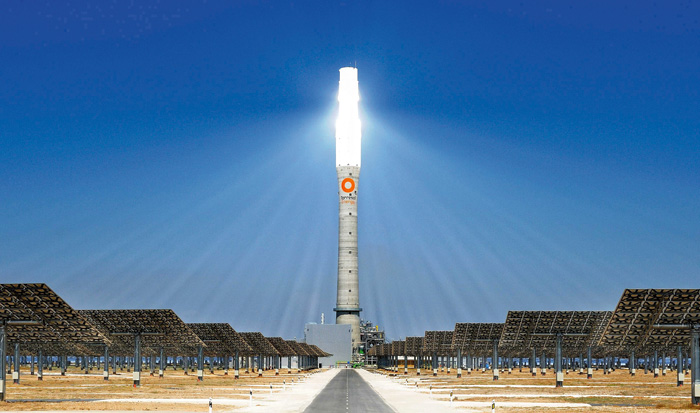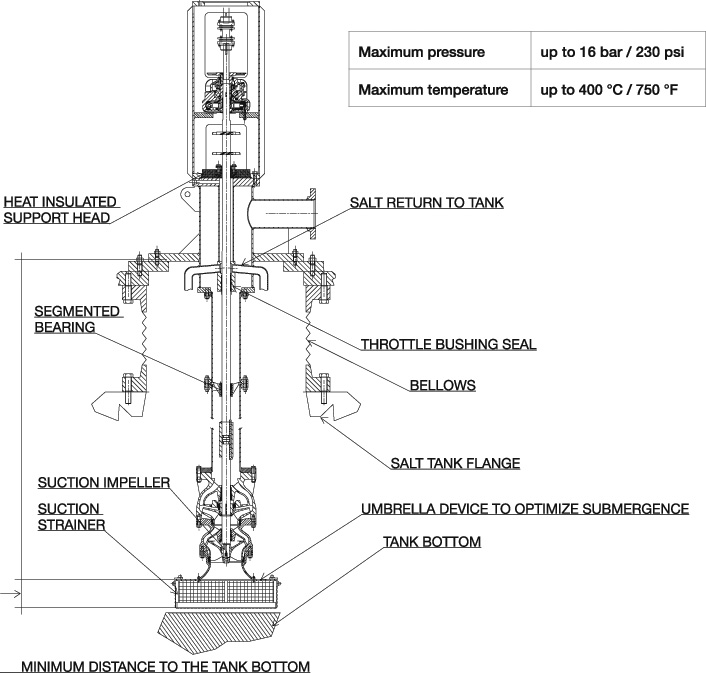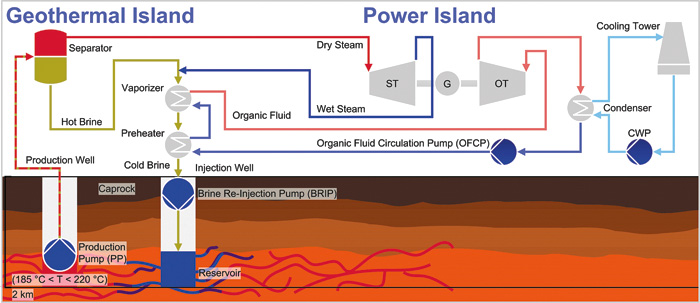Proven concepts together with new technologies battle the energy crisis.
11/29/2012
Worldwide, countries have committed to significantly increase their share of electricity generated from renewable sources by 2020. Several renewable sources will contribute to meeting the expected demand for clean power. Most scenarios predict notable growth of electricity produced from wind, solar, biomass and geothermal sources. Of these, solar power has the highest theoretical potential because the sun provides the Earth with as much energy every hour as human civilization uses every year.
Power from the Sun
Converting solar energy into electricity requires a high level of technological expertise. Photovoltaic cells and concentrated solar power (CSP) systems are the most common technologies commercially used for solar-based electricity generation. Photovoltaic panels directly transform sunlight into electricity, whereas CSP systems concentrate sunlight to heat up a working fluid, which is used to operate a steam turbine to produce electricity. This fast-growing type of solar technology requires strong, direct solar radiation and is mostly used in large, centralized installations by utilities. In CSP plants, pumps are needed to circulate and store the working fluid on the solar island. On the power island, they are used for condensate extraction, feed water and cooling water circulation.Tailored Pumps for Parabolic Trough Systems
The most widely used CSP technology is the parabolic trough system, in which long, trough-shaped mirrors concentrate sunlight onto thermally efficient receiver tubes located along the trough’s focal line. The first parabolic trough plants in the U.S. were commissioned in the Mojave Desert. These tubes are filled with a heat transfer fluid, such as thermal oil, which is heated from 285 C to 310 C. Horizontal, single-stage pumps are used to circulate this fluid through heat exchangers to produce superheated steam. Solar Thermal Plant Gemasolar, property of Torresol Energy, was the first central tower to be built with molten salts for heat storage of 19.9 megawatts in Seville, Spain. The plant has storage capacity to produce electricity for 15 hours without sunlight.
Solar Thermal Plant Gemasolar, property of Torresol Energy, was the first central tower to be built with molten salts for heat storage of 19.9 megawatts in Seville, Spain. The plant has storage capacity to produce electricity for 15 hours without sunlight.Highly Efficient Central-Tower Systems
The central-receiver technology allows higher temperatures and reaches higher efficiencies than parabolic trough plants. Circular arrays of heliostats concentrate sunlight onto a tower-mounted thermal receiver containing a heat transfer media that converts the solar energy into thermal energy to generate superheated steam. This steam is converted to electrical power through a conventional steam turbine. The heat transfer media can be either water/steam or molten salts. Central-tower systems concentrate heat at higher temperatures compared to other CSP systems, improving their conversion efficiency. The working temperature in this system is in the range of 500 C to 600 C, generating supercritical steam, which optimizes the thermal cycle’s efficiency.Powering Through the Night
CSP generates power under direct sunlight, but the heat transfer process with thermal storage integrated into a CSP system ensures power generation during the night or during extended periods with cloud cover. A molten salt circulation pump for parabolic trough concentrated solar power plants
A molten salt circulation pump for parabolic trough concentrated solar power plantsHigh-Temperature Applications
In central-tower units with molten-salt heat storage, the fluids can reach temperatures up to 570 C, while in parabolic trough plants with molten-salt storage the temperatures are around 400 C. The design of pumps for these high-temperature applications requires extensive coordination between materials and plant technology and engineering. Vertical pumps mounted in tanks are preferred to simplify the molten-salt system. This eliminates the need for pump sumps, isolating valves, level instrumentation and associated heaters. It also reduces heat losses and allows the steam generator system to drain directly into the tanks. One pump for the circulation of molten salts in a parabolic trough system incorporates the hydraulics. It is a vertical, mixed-flow pump with high capacity and medium-to-high head units. It balances high efficiency, low submergence and net positive suction head (NPSH) considerations. The pump—used for cold and hot circulation and drainage and melting salt applications—reaches a maximum pressure of 16 bar and can operate up to a maximum temperature of 400 C.Geothermal Power
Geothermal heat originates from the Earth’s consolidation of dust and gas over four billion years. The heat from the Earth’s core continuously flows outward and conducts to the surrounding layer of rock—the mantle. When temperatures and pressures become high enough, the mantle rock melts—becoming magma—and moves slowly up toward the earth’s crust, carrying the heat from below. Geothermal technologies use the energy stored in rock and in trapped vapors or liquids like water or brine. This energy can be used to generate electricity and provide heat. Power generation typically relies on geothermal resource temperatures greater than 100 C. Wells drilled into geothermal reservoirs bring these resources to the surface, generating electricity in geothermal power plants. Several geothermal plant technologies exist today, and the total global geothermal installed capacity is ~10.7 gigawatt per hour, resulting in 67.2 terrawatt per hour produced per year. Geothermal plant types include dry steam plants, in which superheated, pressurized steam is brought to the surface at high speeds and passed through a steam turbine to generate electricity. In flash steam plants, binary-cycle plants or combined flash/binary-cycle plants, the portion of the geothermal fluid that “flashes” to steam under reduced pressure is first converted to electricity with a backpressure steam turbine. The low-pressure steam exiting the backpressure turbine is condensed in a binary system. New technologies such as enhanced geothermal system (EGS) are being developed in Australia and the U.S. Flash/binary-cycle geothermal plant
Flash/binary-cycle geothermal plant
